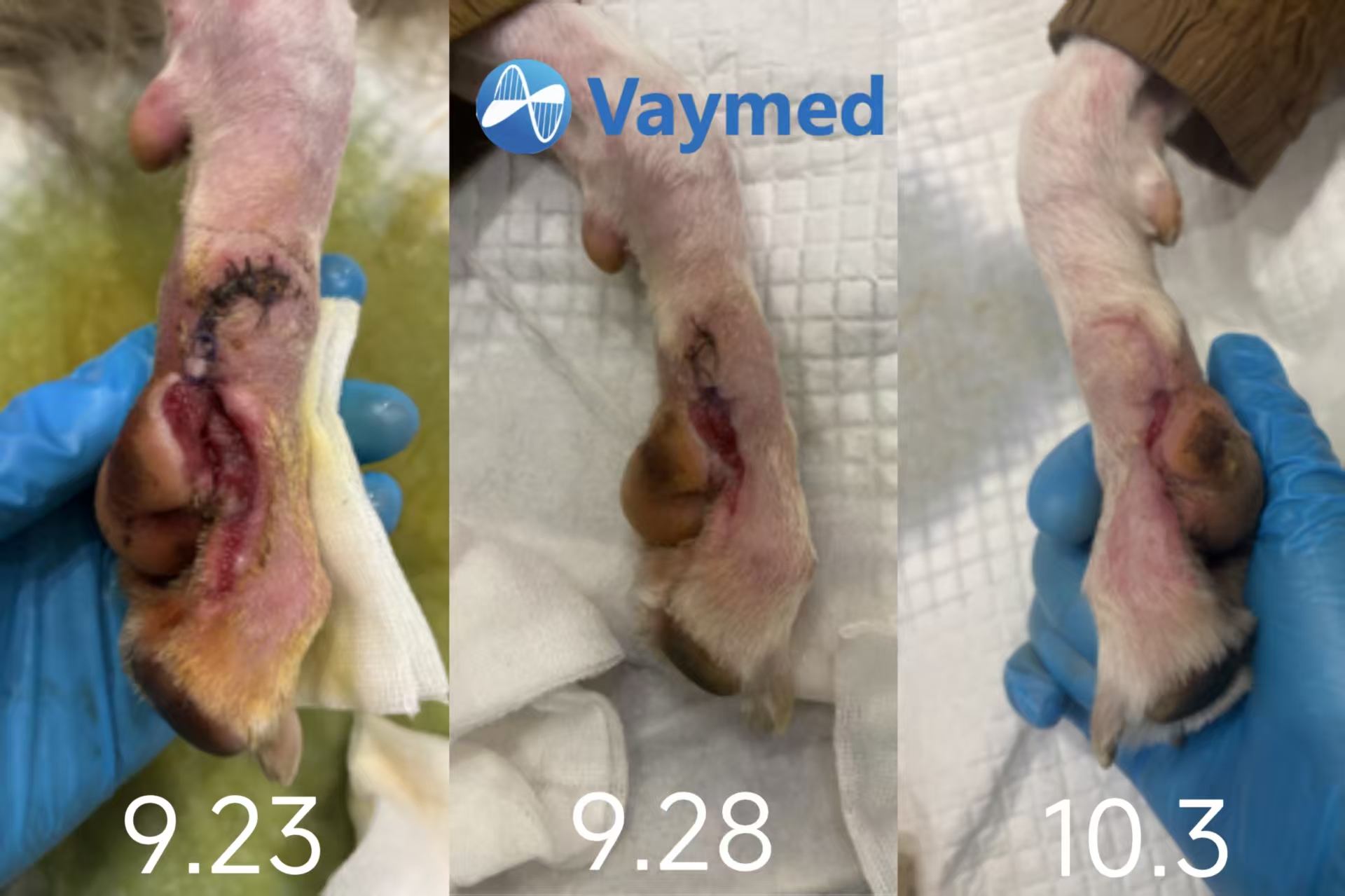Case Overview
Species: Canine
Gender: Female
Age: 3 years 2 months
Presenting Complaint: Pedal Infectious Trauma
Presenting Complaint
Luna was injured while playing outside, its right hind paw swelled significantly, with yellowish-green purulent exudate oozing from the wound; she also refused to bear weight on the paw, licked it frequently, and had less energy and appetite. As the condition worsened, the wound expanded to approximately 8×9 cm, with redness of the surrounding skin and mild local heat. The owner then took Luna to the veterinary hospital for treatment.
Initial Management
Upon admission, the team did a full physical examination and wound assessment for Luna: her body temperature was slightly elevated, and blood tests suggested a systemic inflammatory response; a wound smear also found possible bacterial presence.
Initial care steps included:
Clipping the hair around the wound to avoid contamination, then gently removing necrotic tissue and pus from the wound under sedation.
Irrigating the wound with sterile normal saline to flush out debris, followed by a diluted antiseptic solution for disinfection.
Prescribing oral antibiotics to help control the systemic infection, with a planned short course of treatment.
Treatment Protocol
Starting from September 23, a combined sequential therapy was used for 10 consecutive days, with the following general approach:
1. Class IV Laser Therapy (Skin–Wound–10×10cm Mode)
Done daily right after morning wound cleaning.
The laser probe was held a short distance above the wound, using gentle sweeping movements to cover the entire wound area (including a small part of the surrounding healthy skin).
2. Topical Medication (Shengji San + Burn Ointment)
Applied right after laser therapy, and checked/supplemented again in the evening if needed.
First, a thin layer of Shengji San was sprinkled on the wound (focusing on deeper areas), then a moderate amount of burn ointment was applied on top. The wound was covered with sterile gauze and lightly wrapped with an elastic bandage to keep the dressing in place without affecting blood flow.

Potential Risks and Complications
Incomplete wound cleaning or inadequate antibacterial care may worsen local infection, possibly leading to abscesses or deeper tissue involvement requiring additional treatment.
Infection might spread to bones in some cases, causing more serious problems that require longer care.
Excessive licking, dressing damage, or strenuous activity can reopen the wound and slow healing. Poor blood flow, malnutrition, or underlying health issues may result in delayed or prolonged wound healing.
If infection involves tendons, ligaments, or joints, it could lead to stiffness or lameness, impacting paw function over time.
Home Care Precautions
Wound Protection: Prevent the dog from licking, biting, or scratching the wound (an Elizabethan collar may help). Keep it away from dirty, muddy, or grassy areas to avoid secondary infection.
Activity Control: Avoid strenuous movement (like running, jumping) during treatment. Only allow short, slow walks for bathroom breaks to reduce pressure on the paw.
Dressing & Medication: Follow the vet’s advice to change dressings and apply meds on time. Don’t use harsh disinfectants (e.g., alcohol, hydrogen peroxide) as they may damage new tissue.
Nutrition: Offer a diet rich in protein and vitamins to support tissue repair and immunity.
Post-Recovery Check: After healing, monitor the paw for 1-2 weeks. If redness, swelling, or exudate returns, consult the vet. Gradually resume normal activities to avoid re-injury.
Summary
For Luna’s pedal infectious trauma, combining Class IV laser therapy (Skin–Wound–10×10cm mode) with topical Shengji San and burn ointment seemed to work well.
The laser therapy may have helped improve local blood flow, reduce inflammation, and support tissue growth, while the topical meds may have promoted tissue repair, maintained wound moisture, and helped prevent infection.
After 10 days of treatment, Luna’s wound showed significant healing, her paw function fully recovered, and she went back to normal activity. This combination approach might have shortened the healing time (possibly by around 30% compared to some traditional methods) and reduced the risk of complications, which could be a useful option for similar cases of canine pedal infectious trauma.








